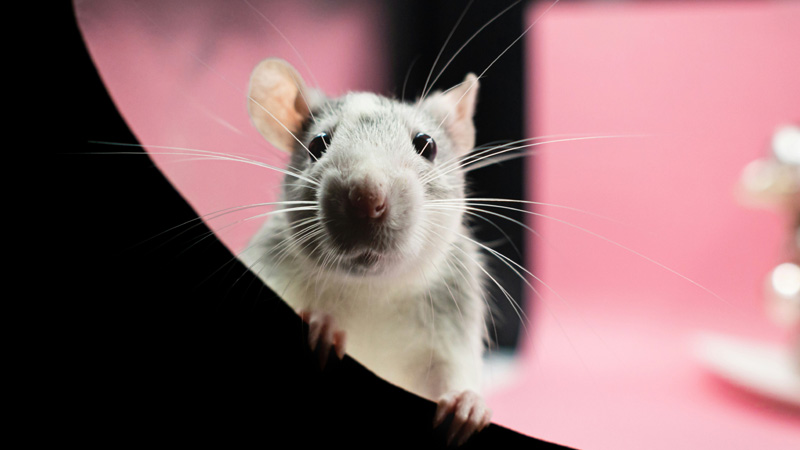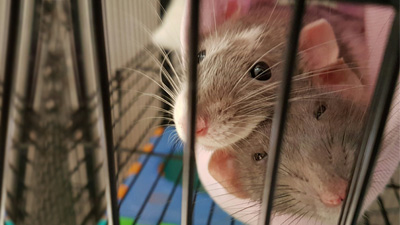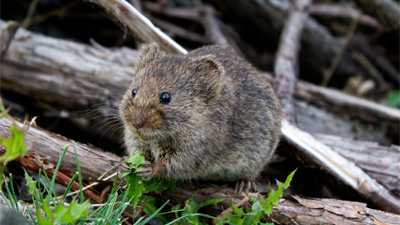Exploring The 4 Largest Pet Rat Breeds

Photo by Nikolett Emmert on Unsplash
Often overlooked as pets, rats come in a wide array of breeds, each possessing its own distinct qualities and allure. While most people envision rats as small critters scurrying about, it may come as a surprise to learn that there are rat breeds that defy expectations with their impressive size.
In this article, we will delve into the fascinating realm of giant pet rats, where we explore the biggest rat breeds and the captivating characteristics that set them apart as extraordinary companions.
1. Gambian Pouched Rat
One of the largest and most exotic rat breeds is the Gambian pouched rat. Also known as the African giant pouched rat, these rodents can grow up to three feet in length, including their tail, and weigh up to 4.5 pounds. Originally from Africa, Gambian pouched rats have become popular as pets in recent years.
Gambian pouched rats have unique physical features, including their pouches and long, rabbit-like ears. They are highly intelligent and require plenty of mental stimulation to prevent boredom. While they can be affectionate and bond with their owners, they are not recommended for first-time rat owners due to their large size and specialized needs.
2. European Burmese Rat
The European Burmese rat is another large rat breed that can grow to be larger than the average pet rat. These rats are known for their muscular build and typically weigh between 350 and 450 grams. European Burmese rats have a stockier appearance compared to other rat breeds.
This breed is highly active and requires plenty of exercise and mental stimulation. They are known for their intelligence and can be trained to perform tricks or respond to commands. European Burmese rats are generally friendly and make good companions for experienced rat owners who can provide them with the proper care and attention they need.
3. Capybara Rat
The Capybara rat, also known as the Argentine giant rat, is one of the largest rodents in the world. While not technically a rat, it is closely related and shares many similar characteristics. Capybara rats can weigh up to 150 pounds and grow several feet in length.
Due to their immense size, Capybara rats are not suitable for typical household pets. They require extensive space, specialized enclosures, and a diet that includes fresh vegetation. Capybara rats are social animals and thrive in groups, making them best suited for owners who can provide them with the appropriate care and environment.
4. Norwegian Rat
The Norwegian rat, also known as the brown rat or sewer rat, is one of the most common and widely recognized rat breeds. While they may not have the same large size as some of the other breeds on this list, they are still larger than the average pet rat. Norwegian rats typically grow to be about 9 to 11 inches long, excluding the tail, and weigh between 250 and 460 grams.
Often considered pests in urban areas, Norwegian rats have been domesticated and can make wonderful pets. They are known for their intelligence, sociability, and adaptability. Norwegian rats are gentle and easy to handle, making them a great choice for families looking for a larger pet rat that is also suitable for children.
Considering Care Needs
Before deciding to bring home a pet rat from one of the larger breeds, there are several important factors to consider regarding their care needs:
Housing Requirements: Larger rat breeds need more spacious cages to accommodate their size. Vertical space is crucial for climbing and exploring, along with additional levels or platforms for exercise and mental stimulation.
Diet and Nutrition: Large rats have higher nutritional needs compared to smaller ones. A diet rich in fresh fruits, vegetables, and high-quality rat pellets is essential for maintaining their health and well-being.
Exercise and Enrichment: Larger rats require opportunities for regular exercise and mental stimulation to prevent obesity and boredom. Providing toys, tunnels, and interactive playtime with their owners is crucial for their overall well-being.
Veterinary Care: Regular veterinary check-ups are essential for any pet rat, regardless of size. Larger rats may have specific health concerns, such as joint problems or obesity, that require additional attention from a knowledgeable veterinarian.
Choosing the Right Rat Breed for You
When considering a pet rat from one of the larger breeds, it's important to keep in mind that their size comes with unique care needs and considerations. These rats require more space, specialized enclosures, and a higher level of commitment compared to their smaller counterparts.
Before bringing home a pet rat, regardless of size, it's crucial to do thorough research on their care requirements and consider if their needs align with your lifestyle and capabilities as an owner. The size of a pet rat should never be the sole factor in choosing a breed. Temperament, compatibility, and the ability to provide adequate care and attention are equally important aspects to consider.
Conclusion
The biggest pet rat breeds, such as the Gambian pouched rat and the European Burmese rat, offer unique and fascinating companionship for experienced rat owners. These larger rats require special care and attention, including spacious enclosures, a nutritious diet, and opportunities for exercise and mental stimulation.
While their size can be impressive, potential owners should carefully consider the specific needs and requirements of these larger rat breeds before making a decision. The decision to adopt a pet rat, regardless of size, should always be based on a thorough understanding of their care needs and a commitment to providing them with a loving and suitable home.
You May Also Like
 Pet RatsWhich Are Better Pets: Male or Female Rats?
Pet RatsWhich Are Better Pets: Male or Female Rats? Pet RatsWhat is the Best Number of Rats to Have as a Pet?
Pet RatsWhat is the Best Number of Rats to Have as a Pet? Pet RatsExploring the 7 Different Types of Pet Rats
Pet RatsExploring the 7 Different Types of Pet Rats Pet RatsAre Rats a Good Pet? Exploring the Benefits of Pet Rats
Pet RatsAre Rats a Good Pet? Exploring the Benefits of Pet Rats Pet RatsWild Rats vs. Pet Rats: What Is the Difference?
Pet RatsWild Rats vs. Pet Rats: What Is the Difference? Help & AdviceExploring 10 Easiest Exotic Pets to Take Care Of
Help & AdviceExploring 10 Easiest Exotic Pets to Take Care Of